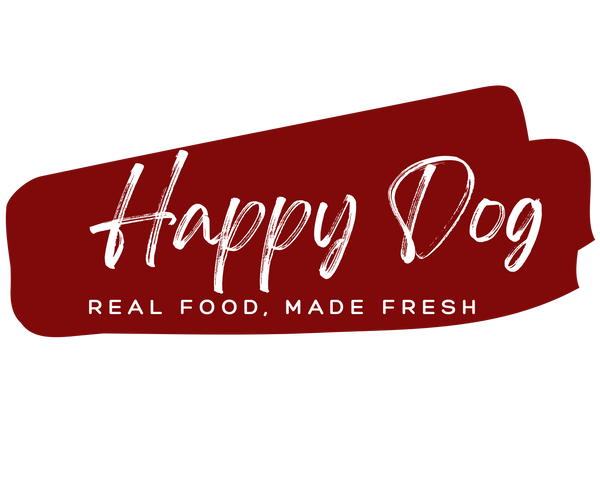
Dietary Protein for Dogs and Cats - The Importance of Digestible Proteins
Dogs and Cats need dietary protein for the following reasons:
- Dogs and cats need 22 amino acids to be healthy. Dogs can synthesize 12 of these amino acids and cats can synthesize 11 of them. The remaining amino acids must come from the food they eat. This is why they are called essentialamino acids.
- Protein provides the essential amino acids that dogs and cats cannot synthesize. Dogs and cats require these essential amino acids in sufficient quantities to remain healthy.
- Protein also provides dispensable amino acids; these are amino acids that dogs and cats can synthesize if appropriate nitrogen and carbon sources are provided. Where do these appropriate nitrogen and carbon sources come from? The dispensable amino acids found in dietary protein1.
The digestibility of a protein is determined by the bioavailability of amino acids derived from proteins in your pet’s food. The following points may assist you in assessing whether you have the right food for your pet:
- All dietary proteins have a biologic value measured in percentage terms, which tells you the usable amino acid content of the protein.
- The higher the biologic value the better. Eggs have the highest biologic value of all dietary protein at 100%, with fish and fishmeal having a biologic value of 92% and beef approximately 78%. All fresh meat and fish have a high biologic value.
- Feathers, beaks, hooves, wool and hair have a very low biologic value. These are all 100% protein, but they are not digestible and accordingly, have a low usable amino acid content. Why do you need to know this? Many pet foods contain words on the ingredients list such as “meat and animal derivatives” and “animal by-product”. These terms are legally defined by European Law. A pet food which states on the ingredients list that it contains “meat and animal derivatives”, or, “animal by-product” may include feathers, beaks, hooves and wool,2 along with a number of other ingredients you may not of realised could legally be used in pet food.
- Animal by-product is legally defined as “entire bodies or parts of animals, products of animal origin or other products obtained from animals, which are not intended for human consumption, including oocytes, embryos and semen.”3 Meat and animal derivatives are defined as: “All the fleshy parts of slaughtered warm-blooded land animals, fresh or preserved by appropriate treatment, and all products and derivatives of the processing of the carcase or parts of the carcase of warm-blooded land animals.” 4 The latter definition has been provided to allow manufactures to avoid listing the individual ingredients in pet foods that make up these meat and animal derivatives.5 Accordingly, meat and animal derivatives and animal by-product in many instances will be the same thing.
- If your pet’s food contains meat and animal derivatives, or, animal by-product it may have a high crude protein level, but it may also have a low biologic value, meaning that your pet’s body cannot easily absorb and make use of this type of protein to gain the essential amino acids in the levels it requires to remain in optimum health.
Some pet food manufacturers point out that meat and animal derivatives and by-product can be nutritious and provide your pet with the essential amino acids it requires. There are scientific studies that support this claim.6 A significant proportion of scientific studies on the use of by-product in pet food, however, conclude that the digestibility of by-product depends upon the quality of the by-product being used, and on the temperatures that the by-product is heated to during its processing. These are some of the important points to remember when considering which food to feed your dog or cat:
- Animal by-product and meat and animal derivatives vary in amino acid digestibility for dogs.7 This variation depends on the quality of the raw ingredients contained in the by-product. The problem is if the manufacturer does not tell you what ingredients make-up the by-product then you have no way of knowing what is in your pet’s food and whether it contains quality protein.
- Whilst there is no noticeable difference in the percentage of protein a dog and cat can digest when fed a highly digestible protein such as fresh mince, cats find it even harder than dogs to digest poor quality protein.8
- Scientific studies have also demonstrated that by-product which is incorporated into pet food in its raw form, and not subjected to heat treatment until it is incorporated into the pet food, has a higher amino acid digestibility than by-product included in the pet food after it has been heated/rendered.9 Most animal by-product contained in dry pet food has been heated/rendered before it is added as an ingredient in pet food. Accordingly, it goes through two cooking processes.
- Heating processes above 110°C have been suggested to be a contributing factor to lower amino acid digestibility of dried by-product in combination with poor quality ingredients.10 European Law specifies the processing methods that may be adopted when processing by-product that is to be used in pet foods manufactured in Europe. This provides for core temperatures up to 133°C to be reached during the processing of the by-product.11 The by-product is then incorporated into a dry pet food and heated again to a minimum core temperature of 90°C.12 The repeated heat treatments may again reduce the quality of the protein by reducing the level of essential amino acids that your pet can derive from this type of protein.
- The higher the ash content of a pet food the lower the level of amino acid in the protein. High ash content can be due to an increased level of bone in the by-product. Collagen makes up 83% of the protein in bone and is severely deficient in many essential amino acids.13
- A good quality dried meat as opposed to meat by-product/ meat derivatives is a highly digestible protein with high levels of useable amino acids.14 This may still not, however, be satisfactory for cats. Cats overall health will usually benefit from a wet food diet being obligate (strict) carnivore that have evolved to derive moisture from their food.
Key Points to Remember
-
When choosing your pet’s food ensures that you are using a food that contains digestible proteins. Look for foods that contain fresh meat or fish, or, dried meat or fish from lean muscle meat and identified organs.
-
Remember if the dried food has a high ash content it’s likely to contain a significant percentage of bone. This contains less amino acids per unit of protein, which could limit the level of amino acids that your pet can derive from the food.
-
Poor quality animal by-product, or, meat and animal derivatives can be highly indigestible form of protein for cats and dogs. Not only will there be limited digestibility of amino acids from this type of pet food, the indigestible protein may cause metabolic stress to your pets digestion as your pet’s metabolism has to work harder as it tries to assimilate the protein.
-
It is even more important to avoid poor quality animal by-product and meat and animal derivatives in pet foods being fed to cats. Scientific studies have demonstrated that cats digestibility of amino acids is lower than dogs when fed on a diet containing low quality animal by-product.
-
Your pet food label does not provide any measurement of the digestibility of the protein contained in it. Accordingly, it is important to check the pet food label to ensure that you pet’s food only contains good quality and identifiable sources of animal protein. Ingredients such as “meat meal”, “animal by-product” and “meat and animal derivatives” are generic terms that tell you nothing about the quality of these ingredients.
-
Remember its not enough to check for the crude protein level on the pet food label. It is the quality of protein that is used in the pet food that matters. A pet food which contains a higher quality protein, such as fresh meat, may have a lower crude protein level than a pet food made from by-product, however, because it is more digestible your pet may derive more essential amino acids from the pet food containing the fresh meat.
